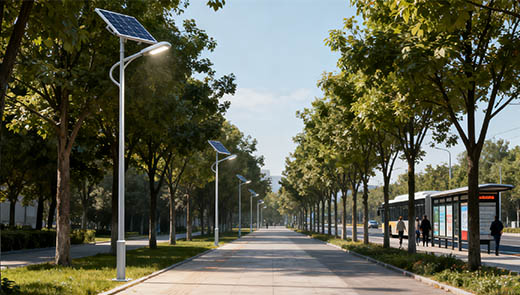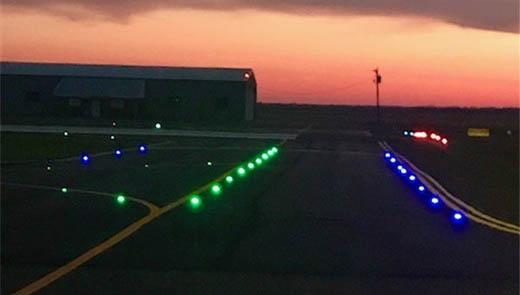What To Expect From Commercial LED Street Light Longevity
In the lighting planning of urban space, the longevity of street lights is a key factor that cannot be ignored, which not only relates to the maintenance cost of the lighting system, but also has a direct impact on the safety and operational efficiency of the city at night. In this paper, we will discuss the longevity of commercial LED street lights in depth, including the comparison of their lifespan with that of traditional street lights, the various factors that affect the lifespan of LED street lights, and the best practices that can effectively extend the lifespan of LED street lights, in order to provide a comprehensive reference for relevant practitioners and decision makers.
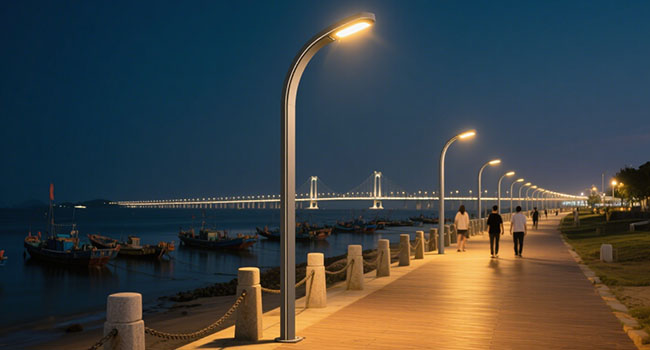
Comparing Longevity: LED vs. Traditional Street Lights
In the field of urban lighting, different types of street lights have their own characteristics, and longevity is one of the most important indicators of their performance. Common types of street lights include LED street lights, high pressure sodium lights, fluorescent lights, metal halide lights, etc., and their lifespans vary significantly.
LED Street Lights
LED street lights have a lifespan of up to 50,000 hours, an amazing lifespan that dramatically reduces the frequency of replacement and maintenance, and it does not go out suddenly, but gradually dims, avoiding sudden and complete power outages and guaranteeing continuity of lighting.
High Pressure Sodium lights
High Pressure Sodium (HPS) lights have a lifespan of about 25,000 hours. They are yellow-orange in color, take time to start up, require ballasts or transformers to regulate the current, and are prone to burn out at the end of their lifespan, which results in more frequent replacements and increased maintenance costs and effort.
Fluorescent Lights
Fluorescent lights have a lifespan of about 10,000 hours, with fluorescent tubes performing poorly in cold or windy environments. While fluorescent lights have a longer lifespan than traditional tubes, they are still not as durable as LED, and their light intensity may begin to drop off in the middle of their lifespan, and they often require a separate ballast, which makes them less convenient to use.
Metal Halide Lights
With a lifespan of about 12,000 hours, metal halide lights provide true white light and realistic color rendering, and are commonly used in parking lots and stadiums, but they can cause light pollution, and more importantly, they have the added risk that they may explode or shatter when they fail, and even though ceramic discharge metal halide lights are a much more efficient alternative, they still have similar limitations.
Factors Affecting LED Street Light Fixture Lifespan
Although LED street lights are known for their durability, there are several factors that can affect their lifespan. Understanding these factors and acting accordingly can help optimize the performance and extend the life of LED luminaires.
Heat Management
Heat is a major factor in the performance and life of LED. Excessive heat can lead to thermal stress, premature aging and reduced light output. In order to solve this problem, manufacturers usually adopt advanced heat dissipation technologies and designs, such as heat sinks, heat pipes and cooling fans are common means of heat dissipation, which can effectively dissipate heat and maintain a lower operating temperature of LED, thus guaranteeing their normal operation and prolonging their lifespan.
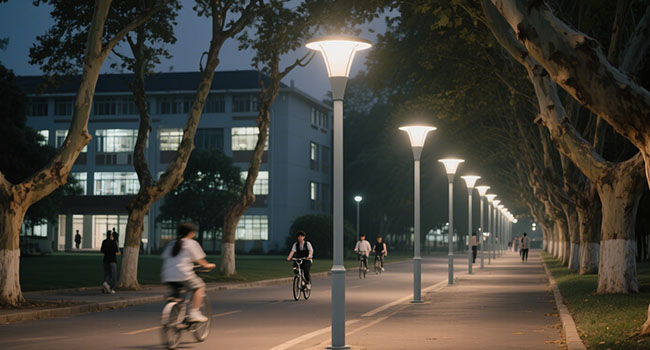
Quality of Components
The quality of LED components has a significant impact on the life of the street light. Using poor quality or unqualified components may lead to lower efficiency and premature failure of the LED street light, thus shortening its service life. Therefore, when choosing LED street lights, you should prioritize products from reputable manufacturers that typically use high-quality LED, drivers and other key components to ensure better performance and longer life.
Environmental Factors
Environmental conditions are also important factors in the life of LED street lights, such as extreme temperatures, humidity, and exposure to the elements. While LED lights are designed to withstand a range of temperatures, typically -20°C to 50°C, they should be chosen carefully for extreme weather conditions, and LED with an appropriate IP rating should be selected for such locations. For such locations, LED luminaires with an appropriate IP rating should be selected to ensure that they are resistant to moisture, dust and other environmental elements.
Lighting Hours and Usage
Lighting duration and usage patterns also affect the lifespan of LED street lights. Generally speaking, the more frequently and longer the fixtures are used, the faster their lifespan may decrease. Therefore, in practical applications, specific lighting requirements must be considered to develop an optimal lighting schedule. Additionally, utilizing smart lighting controls, such as dimming or motion sensors, can effectively regulate the use of LED fixtures, thereby extending their lifespan.
Maintenance and Upkeep
Proper maintenance and upkeep are crucial to ensuring the lifespan of LED street lights. Regularly cleaning the fixtures to remove dirt, dust, and debris from the surface helps prevent heat buildup and maintain optimal light output. Additionally, conducting regular inspections to promptly identify signs of wear or damage and taking measures to address them is essential. Furthermore, maintenance tasks such as testing electrical connections, checking for water ingress, and updating firmware can also extend the overall lifespan of the fixtures.
Best Practices to Extend LED Street Light Lifespan
Regularly Inspect and Clean the Fixtures
Regular inspection and cleaning of LED street lights are key to extending their lifespan, preventing the buildup of dirt and debris and ensuring the fixtures maintain optimal performance. However, the cleaning schedule should be determined based on environmental conditions. In heavily polluted or dusty environments, the cleaning frequency should be appropriately increased.
Monitor Electrical Connections
Inspecting electrical connections ensures the proper operation of the fixtures. Loose or corroded connections can impair LED street light performance and even shorten their lifespan. Therefore, connections should be regularly tightened, and any damage should be carefully inspected. Any issues should be addressed promptly.
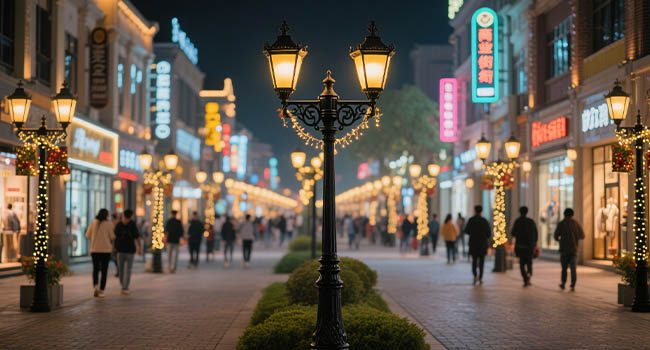
Implement a Preventive Maintenance Plan
Implementing a preventive maintenance plan can significantly extend the lifespan of LED street lights. Through daily inspections, including monitoring light levels and identifying potential issues, problems can be detected and resolved before they escalate, preventing minor issues from becoming major failures.
Train Professional Maintenance Personnel
Training maintenance personnel in LED technology and its specific requirements is crucial. Properly educated staff can handle and maintain the fixtures correctly, effectively implement best practices, reduce the risk of operational errors, and thereby maximize the lifespan of LED street lights.
Commercial LED street lights offer significant advantages in terms of lifespan, outperforming traditional street lights in reducing replacement and maintenance costs. However, their lifespan is influenced by various factors, including thermal management, component quality, environmental conditions, lighting duration, usage patterns, and maintenance practices. Therefore, understanding these influencing factors and implementing corresponding best practices are critical to extending the lifespan of LED street lights.


